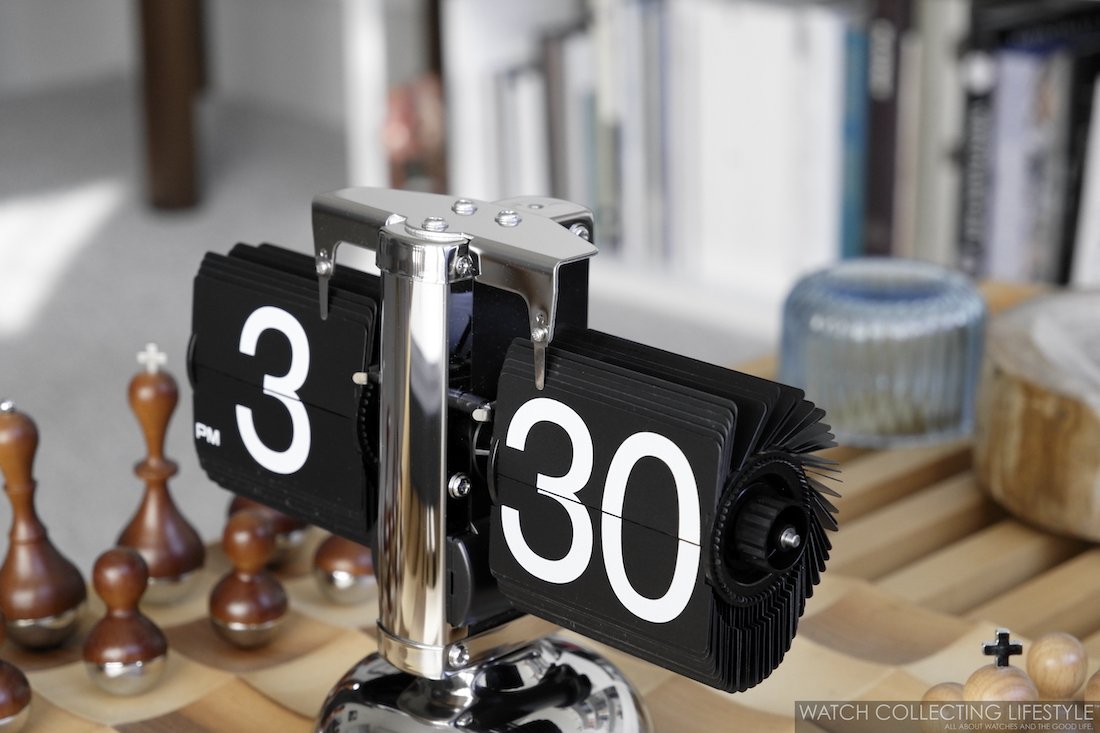The flipping desk clock, also known as a "flip clock" or "flip-style clock," was first invented by Austrian inventor and engineer Josef Pallweber in 1890 and produced in Lenzkirch, Germany by the world-renowned Lenzkirch Clock Factory between 1893-1894. Back then, flip clocks were very different but they set the ground for the flip clocks that became very popular in the 1960s. Josef Pallweber is also responsible for creating the first digital clocks and the first digital watch.
Nevertheless, German engineer, Friedrich W. Heine, patented the design in 1903. However, the mass production and popularity of flipping desk clocks began in the 1960s and 1970s, particularly with brands like Panasonic and Copal.
These clocks gained widespread popularity for their unique mechanical display, where the numbers flipped over to display the time. Since then, flipping desk clocks have become iconic retro timepieces that are cherished by collectors and enthusiasts worldwide.
Desk and table clocks are not only functional timepieces but also stylish accessories that add a touch of sophistication to any workspace. However, in recent times, a new trend has resurfaced with flipping desk clocks or flip clocks. These innovative timekeepers have gained popularity among watch collectors and enthusiasts for their unique design and mesmerizing display of time.
How Flip Clocks Work
Flip clocks operate on the principle of flipping or rotating tiles to display the time. Each minute or hour is represented by a series of numbered or patterned tiles that mechanically flip to reveal the changing time. This dynamic movement creates an engaging and interactive way of reading time, transforming the act of checking the time into a captivating experience.
Powered by an electric motor —AC-powered back in the days and now battery-powered—, the clock turns two sets of wheels continuously via a reduction gear train. One of the gears moves at a faster rate and the other at a slower rate. It is important to clarify that the wheels move continuously and not in steps as most people would think considering the principles of horology and moving gears.
The faster wheel is connected to a ring of 60 flat plastic leaves. The leaves have printed numerals so that, when a person holds two adjacent leaves apart like an open book, the two open leaves spell out a numeral, and flipping a leaf down increases the number shown by one unit. The "book" is opened vertically, and its pages form a ring. This ring is put into position and rotated so that one page falls each minute, showing a new number for the minutes.
The slower wheel is connected to a similar ring of leaves; however, there are only 48 leaves on this ring if the clock is a 24-hour format military time clock. Here’s how it works: there are two leaves for each hour, including 12 am, 12 am, 1 am, 1 am, 2 am, 2 am, ... 11 pm, 11 pm in a 12-hour clock; and 0, 0, 1, 1, 2, 2, ... 23, 23 in a 24-hour clock.
Having two sets of leaves for each hour also allows the clock to alternate between 12 and 24-hour display, every half hour, like this: 12 am, 0h, 1 am, 1h, 2 am, 2h, ... 11 pm, 23h. One leaf falls each half-hour, at approximately 25 and 55 minutes after the hour.
When the clock is in the modality of an AM/PM format, the design features 60 leaves with the numbers 1 to 12 repeated in fives, each leaf falling after 12 minutes. The disadvantage of this is that 24-hour clocks cannot use this design, nor there is a way to show "AM" or "PM" information in a 12-hour design.
The minute leaves 45 through 59 have a small tooth on their left edges, pointing toward the hour leaves. The purpose of this tooth is that 45 minutes after the hour, the tooth pushes a small hook that protrudes into the hour wheel area. This hook will catch any falling hour leaf —as mentioned above, it falls from its metal tab a few minutes before the hour— until it is released by the minute leaf fall at the top of the hour.
Apart from their functional aspect, flipping desk clocks are also appreciated for their aesthetic appeal. The flipping mechanism often becomes a focal point, captivating the attention of anyone in the vicinity. These clocks come in a variety of designs, ranging from sleek and modern to vintage and retro, catering to diverse tastes and preferences. The visual impact of the flipping action coupled with elegant craftsmanship makes these clocks a conversation starter and a coveted addition to any desk or tabletop.
For watch collectors, flipping desk clocks present an exciting opportunity to expand their collection beyond traditional timepieces. The intricate engineering and design of these clocks resonate with the same appreciation for craftsmanship and innovation found in mechanical watches. With limited editions and unique variations available, flipping desk clocks have become sought-after collector's items, capturing the interest of those who appreciate the fusion of artistry and functionality.
As the trend continues to gain momentum, manufacturers have introduced a wide array of designs, incorporating different materials, colors, and themes. From minimalist stainless steel constructions to luxurious wood and leather finishes, there is a flipping desk clock to complement every aesthetic. Furthermore, some models integrate additional features such as temperature display, calendar functions, and ambient lighting, enhancing their allure and utility.
Flipping desk clocks represent a delightful fusion of form and function, offering a fresh perspective on timekeeping while serving as elegant decor pieces. Whether as a personal indulgence or a thoughtful gift for a fellow enthusiast, these captivating clocks have established themselves as a distinctive trend within the realm of timepieces, transcending the traditional boundaries of clock design. As they continue to captivate the imagination of collectors and enthusiasts, flipping desk clocks are poised to endure as a timeless trend in the world of horology.





















